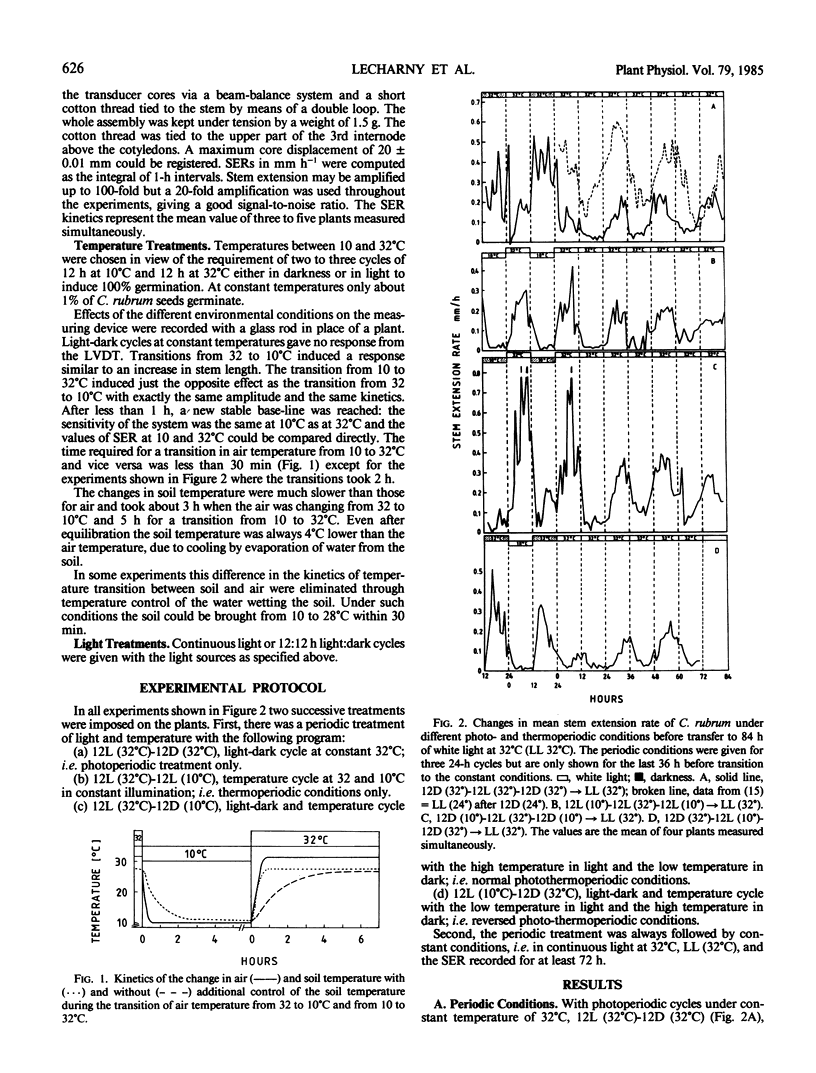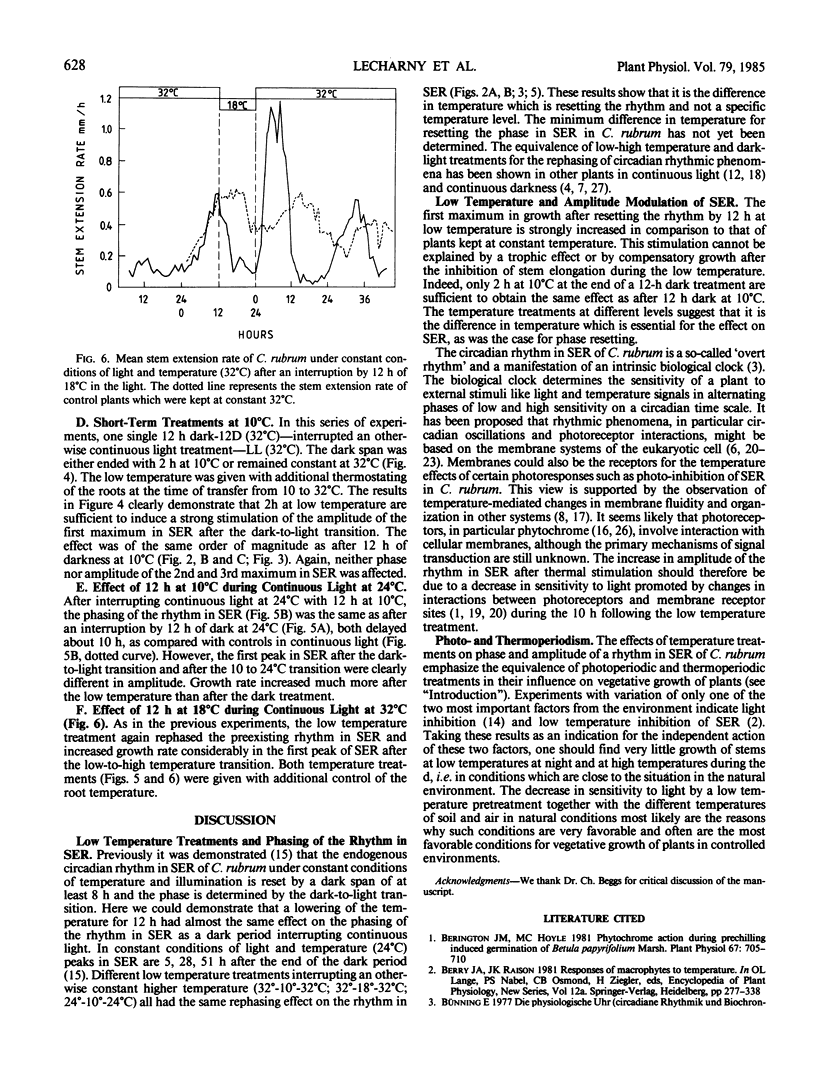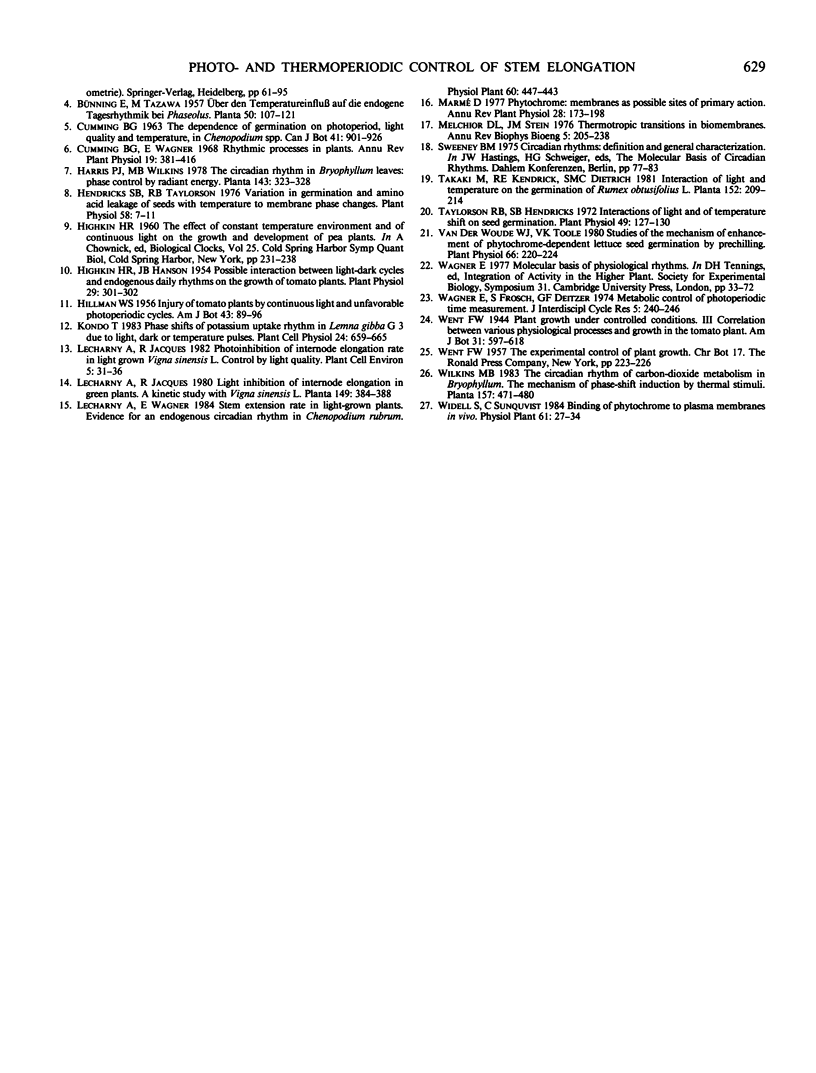Abstract
Low temperature pulses have two effects on the circadian rhythm exhibited by stem extension rate of green Chenopodium rubrum plants. First, low temperature pulses have the same effect on the phasing of the rhythm as a dark period interrupting continuous light. Second, low temperature pulses stimulate stem extension rate during the 10 hours immediately following the end of the pulse. A difference in temperature between soil and air increases this effect. In any case, it is the change in temperature which is essential and not a specific temperature. Effects of light and temperature on phasing and amplitude of the rhythm explain why the maximal stem growth is observed under normal photo-thermoperiodic conditions, i.e. a high temperature during the photoperiod and a low temperature during the dark period.
Full text
PDF




Selected References
These references are in PubMed. This may not be the complete list of references from this article.
- Bevington J. M. Phytochrome Action during Prechilling Induced Germination of Betula papyrifera Marsh. Plant Physiol. 1981 Apr;67(4):705–710. doi: 10.1104/pp.67.4.705. [DOI] [PMC free article] [PubMed] [Google Scholar]
- HIGHKIN H. R. The effect of constant temperature environments and of continous light on the growth and development of pea plants. Cold Spring Harb Symp Quant Biol. 1960;25:231–238. doi: 10.1101/sqb.1960.025.01.023. [DOI] [PubMed] [Google Scholar]
- Hendricks S. B., Taylorson R. B. Variation in germination and amino Acid leakage of seeds with temperature related to membrane phase change. Plant Physiol. 1976 Jul;58(1):7–11. doi: 10.1104/pp.58.1.7. [DOI] [PMC free article] [PubMed] [Google Scholar]
- Highkin H. R., Hanson J. B. Possible Interaction between Light-dark Cycles and Endogenous Daily Rhythms on the Growth of Tomato Plants. Plant Physiol. 1954 May;29(3):301–302. doi: 10.1104/pp.29.3.301. [DOI] [PMC free article] [PubMed] [Google Scholar]
- Melchior D. L., Steim J. M. Thermotropic transitions in biomembranes. Annu Rev Biophys Bioeng. 1976;5:205–238. doi: 10.1146/annurev.bb.05.060176.001225. [DOI] [PubMed] [Google Scholar]
- Taylorson R. B., Hendricks S. B. Interactions of light and a temperature shift on seed germination. Plant Physiol. 1972 Feb;49(2):127–130. doi: 10.1104/pp.49.2.127. [DOI] [PMC free article] [PubMed] [Google Scholar]
- Vander Woude W. J., Toole V. K. Studies of the Mechanism of Enhancement of Phytochrome-dependent Lettuce Seed Germination by Prechilling. Plant Physiol. 1980 Aug;66(2):220–224. doi: 10.1104/pp.66.2.220. [DOI] [PMC free article] [PubMed] [Google Scholar]


